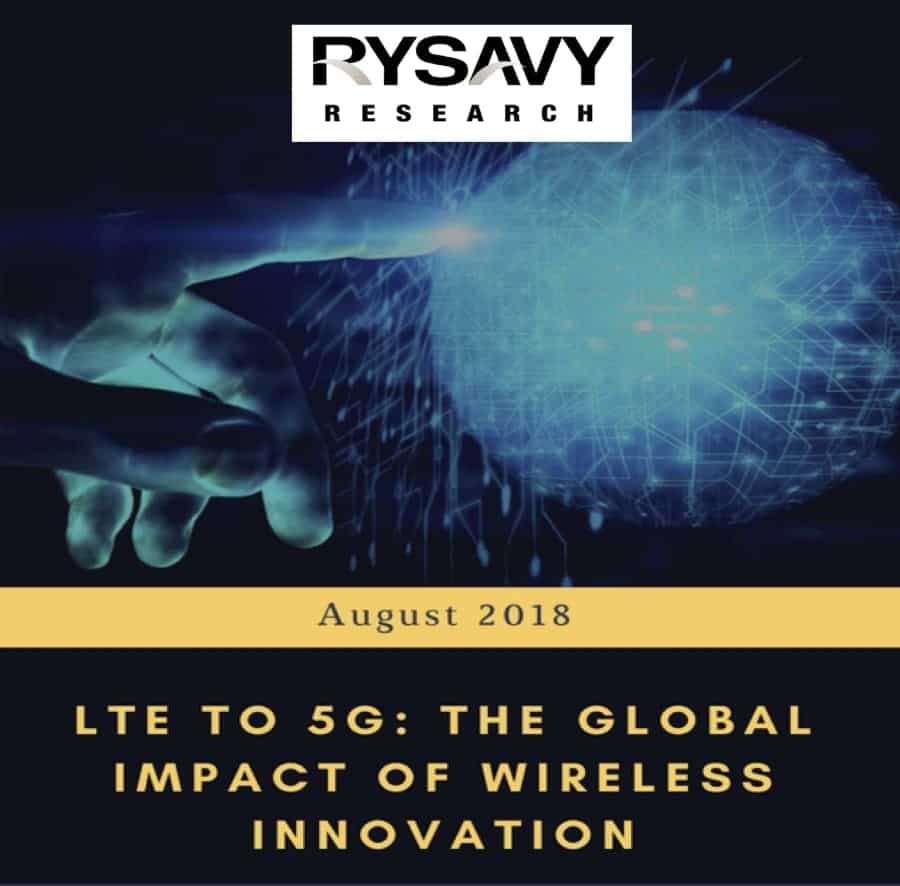
5G will lead to a new era of technology innovation as it transforms how people and things interact in the world even as LTE capabilities expand to serve billions of subscribers.
5G Americas, the industry trade association and voice of 5G and LTE for the Americas, announced today the publication of LTE to 5G: The Global Impact of Wireless Innovation, a comprehensive 5G Americas technology whitepaper authored by Rysavy Research, clearly explaining the technical advances for the transformation of networks from LTE to 5G.
LTE, the mobile broadband foundation for 5G, today with 600 network deployments worldwide (TeleGeography), has an ever-expanding road of development even as new innovations for 5G have been designed to integrate with LTE networks. By 2022, Ovum forecasts 9.2 billion cellular connections, including 5.6 billion LTE and 400 million 5G connections.
2018 saw the completion of the first 5G standard in an initial version of 3GPP Release 15, making tremendous strides in defining new technical capabilities for 5G and allowing network deployment to begin as soon as late 2018. The flexible capabilities of 5G enable a wide range of business models, including fixed-wireless access, enhanced mobile broadband, and IoT support. The innovative 5G technical standard provides the specifications for harnessing new millimeter Wave (mmWave) spectrum that has never before been used for cellular technology communications.
Chris Pearson, President, 5G Americas commented, “The industry is rapidly changing and responding to the surge of applications, services and machines that consume even more wireless data. Operators and vendors are collaboratively working towards efficient, faster, and higher-capacity networks for the realization of 5G.”
By supporting new types of applications and flexible use of spectrum, 5G will provide the communications foundation for a future world of augmented and virtual reality, autonomous cars, smart cities, wearable computers, Artificial Intelligence (AI), an everything-connected environment, and innovations not yet conceived. 5G IoT capabilities will connect every type of conceivable device, leading to better health, economic gains, and other numerous advantages.
“5G will require low, mid and high band spectrum to fulfill its promise. By harnessing new spectrum, such as mmWave bands above 24 GHz, 5G will eventually be able to access more than ten times as much spectrum than is currently available for cellular operation. Furthermore, using radio bands of hundreds of MHz will result in multi-Gbps of throughput capabilities,” stated Peter Rysavy, President of Rysavy Research and the paper’s author.
5G Americas whitepaper LTE to 5G: The Global Impact of Wireless Innovation captures the scope of the most important wireless developments in 2018, such as:
-
Completion of 3GPP Release 15 standard – 5G New Radio with massive Multiple-Input Multiple Output (MIMO), scalable-width sub-channels; carrier aggregation; cloud Radio-Access Network (RAN) capability; network slicing; and co-existence with LTE
-
Fiber densification – hundreds of thousands of new small cells to support 5G, 3.5 GHz, and Licensed Assisted Access (LAA)
-
Utilization of new spectrum resources above 6 GHz for wider channels with correspondingly faster data rates, capacity gains or a combination thereof
-
Dramatic advantages provided by LTE-Advanced with continued improvements including Gigabit LTE, multiple methods for expanding capacity in unlicensed spectrum, new IoT capabilities, vehicle-based communications, enhanced Inter-Cell Interference Coordination (eICIC), Self-Organizing Networks (SON), and Enhanced Coordinated Multi Point (eCoMP)
-
Importance of low, mid, and high-band spectrum for 5G, particularly licensed spectrum
-
LTE operating in unlicensed spectrum
-
Emergence of Network Function Virtualization (NFV) and software-defined networking (SDN) tools and architectures to reduce network costs, simplify deployment of new services, reduce time for deployment, and scale networks — all enabling 5G
-
Wide-scale adoption of IoT driven by improved LTE support such as low-cost and low-power modems, enhanced coverage, higher capacity and service-layer standardization. Further developed in 5G with mission-critical communications capability and network slicing

